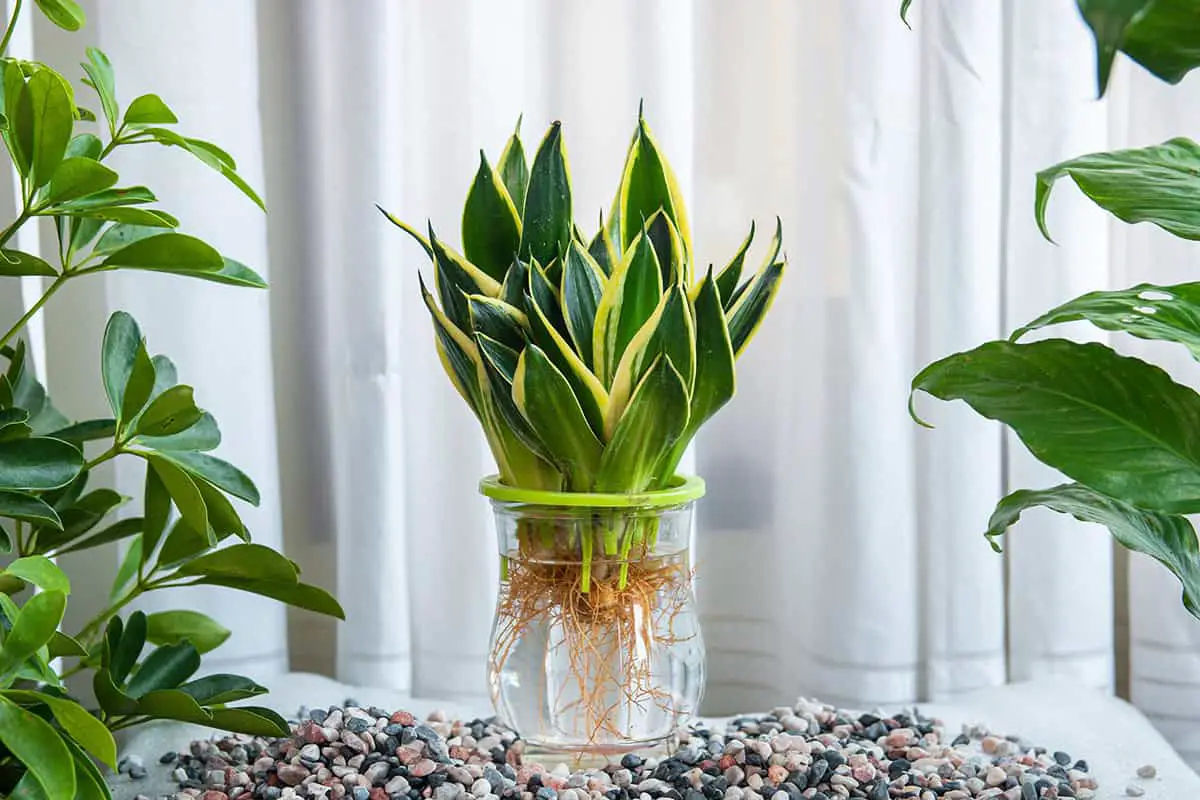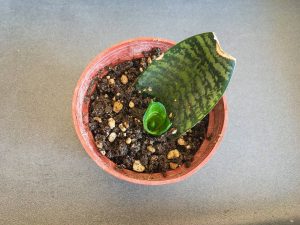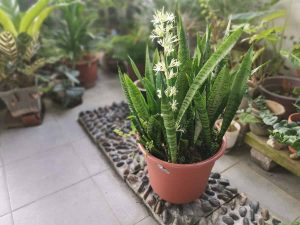You’ve just noticed your snake plant looking a bit dull in its pot of soil, and you’ve heard that growing plants in water can be a fun and clean alternative. Transitioning your snake plant to water can be surprisingly simple and rewarding. This post will help you learn the steps to successfully grow your snake plant in water.
Table of Contents
Benefits of Water Propagation
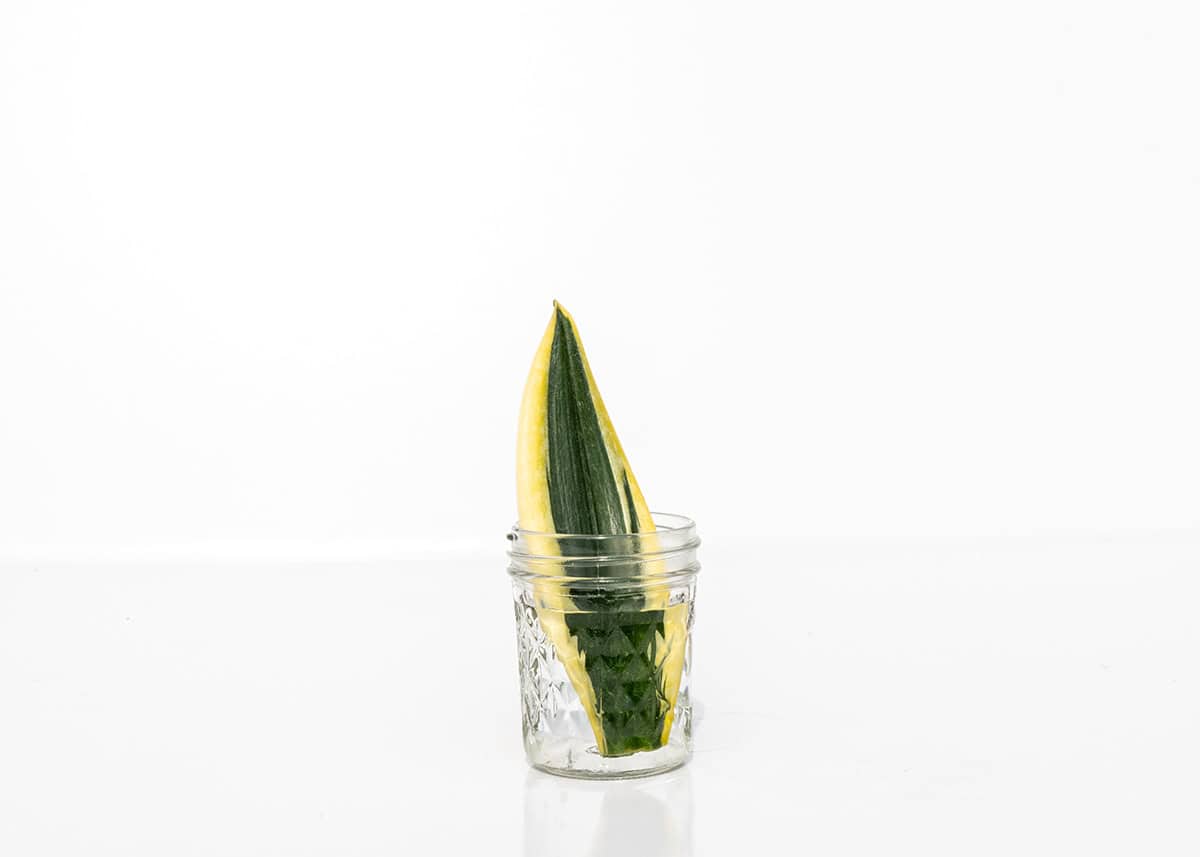
Observation of Root Development
One of the main benefits of water propagation for snake plants is the ability to observe root development. You can see the roots forming, allowing you to monitor their health and progress closely.
Ease of Setup
Water propagation is easy to set up. All you need is a container with water and a healthy snake plant leaf, making it simpler than soil propagation, which requires specific soil types and conditions.
Reduced Risk of Pests
Water propagation significantly reduces the risk of pests. Soil can harbor pests that might damage your plants, but with water propagation, this risk is minimized, keeping your plant environment cleaner.
Healthier Root Systems
Water propagation encourages healthier root systems. The constant access to water helps the roots grow more robust and even, supporting the overall health of the plant.
Cost-Effective Method
Water propagation is a cost-effective method. You don’t need to buy soil, pots, or other materials. Household items like jars or glasses can be used to get started, making it an economical choice.
Materials Needed
You need several key items to grow snake plants in water. First, select a healthy snake plant with vibrant leaves. Ensure the plant has strong, undamaged roots.
Choose a clear glass container. This allows you to monitor root growth. A glass jar, vase, or bottle works well.
Fill the container with clean, filtered water. Avoid using tap water with chemicals.
You’ll need a sharp, clean knife for cutting. Trim the leaves at the base, ensuring a clean cut.
Use clean pebbles or marbles. These help anchor the plant and support the roots.
Change the water regularly. Fresh water prevents algae and bacterial growth.
Maintain indirect, bright light. Snake plants thrive in moderate light conditions.
Watch for root rot. Ensure leaves aren’t submerged.
Patience is crucial. Snake plants grow slowly in water.
Selecting and Preparing Snake Plant Cuttings
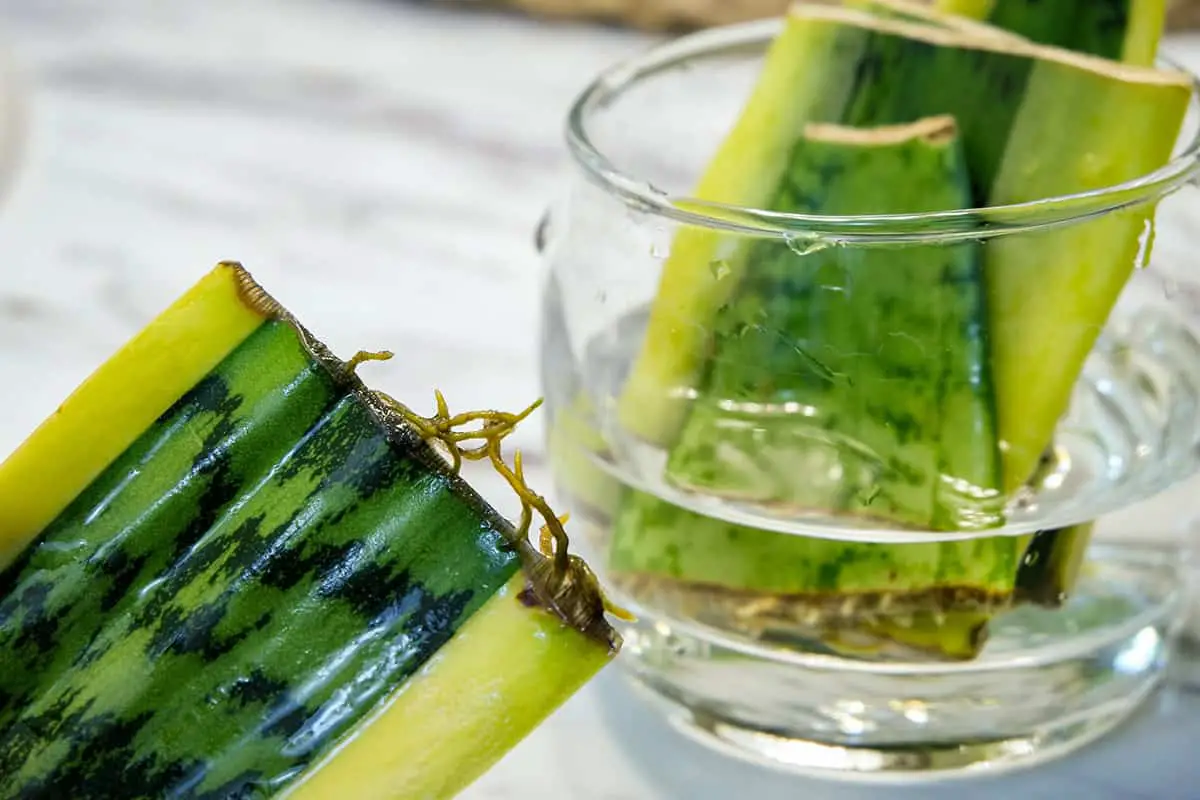
To grow snake plants in water, start by selecting healthy leaves. Choose mature leaves that are firm and free of pests or diseases. Ensure the leaf is at least six inches long. This size promotes better rooting.
Once you have selected a leaf, use a clean, sharp knife or scissors to cut it near the base. Make a straight or angled cut. This will prevent water from pooling on the cut end, reducing the risk of rot.
Next, cut the leaf into 3 to 4-inch sections. Each section should have a clear top and bottom. You can mark the top with a soft pencil to avoid planting the cuttings upside down.
Allow the cuttings to dry for 1-2 days. This step helps form a callus on the cut ends, which reduces the chance of rotting when placed in water. Make sure the cuttings are placed in a dry area out of direct sunlight.
Once the cut ends are callused, place them in a container of water. The water level should cover the bottom inch of the cuttings. Change the water daily to keep it fresh and reduce bacteria buildup.
Place the container in a warm spot with indirect light. Direct sun can damage the delicate developing roots. Watch for root growth over the next few weeks. You’ll see roots forming at the cut ends submerged in water.
Setting Up the Water Environment
Start by selecting a glass jar or container for your snake plant. Ensure it is clean and clear. This helps you easily monitor the water levels and root growth.
Fill the container with water. Use distilled or rainwater. Tap water can contain minerals and chemicals harmful to snake plants. Avoid using softened water due to its salt content.
Gently rinse the roots of your snake plant. Remove any soil. This prevents rot and keeps the water clean. Submerge only the roots in the water, keeping the leaves dry.
Change the water every two weeks. This helps prevent bacterial growth. Fresh water also supplies necessary oxygen to the roots.
Place the container in a bright, indirect light location. Direct sunlight can cause algae growth in the water, which is not ideal for the plant. Avoid overly dark places to ensure healthy growth.
Ensure the room temperature stays between 60-80°F (16-27°C). Avoid placing the plant near drafts or direct heat sources. This creates a stable environment for healthy root development.
Monitoring your snake plant’s roots is essential. Watch for signs of root rot or discoloration. Healthy roots are white or light-colored. Remove any rotten parts to maintain plant health.
Rooting Process
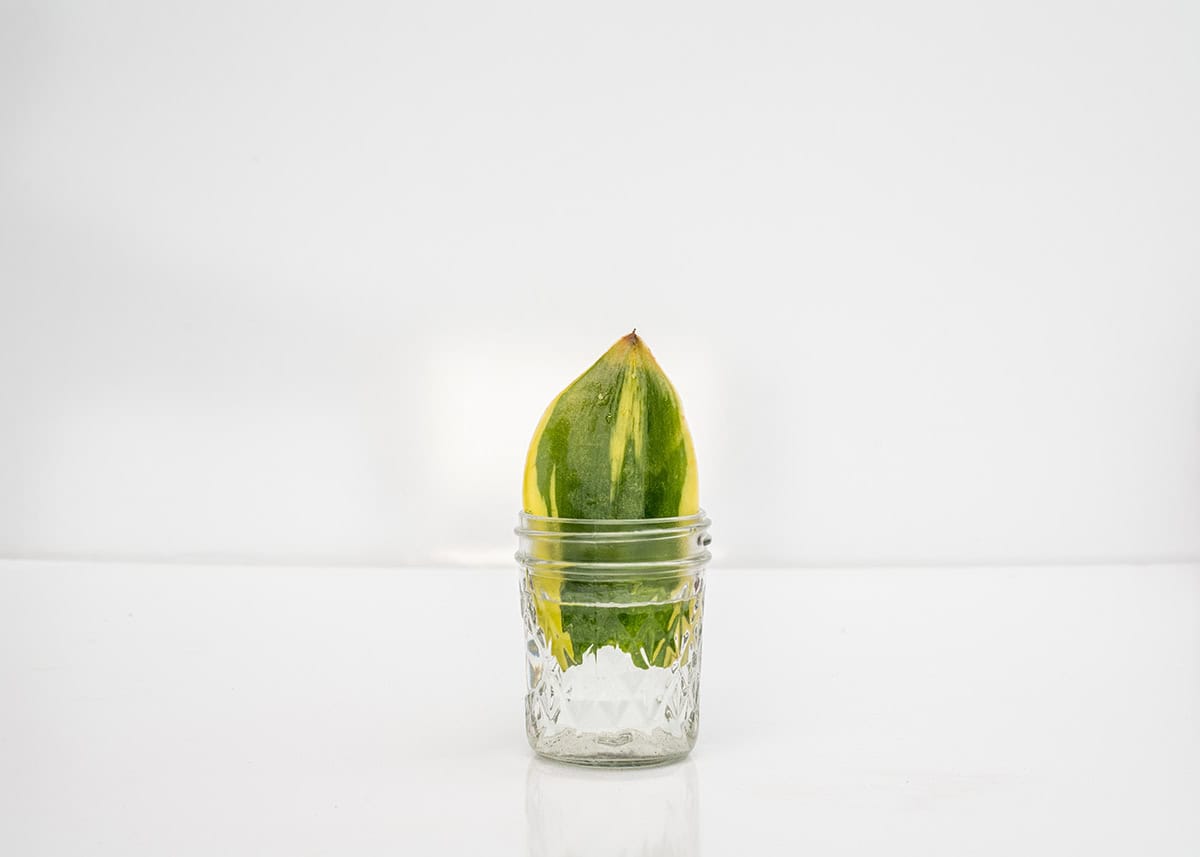
To root snake plants in water, gather a few healthy leaf cuttings. Use a clean, sharp knife to cut each leaf into 4-5-inch sections. Ensure the bottom part of each cutting is slightly angled.
Place the cuttings in a jar of water. The water should cover just the bottom inch of each cutting. Use clear jars to monitor progress easily.
Change the water every 1-2 weeks. Fresh water prevents bacterial growth and ensures the cuttings stay healthy. Always use room-temperature water.
Ensure the jar is in a warm spot. Indirect sunlight works best for root development. Within a few weeks, you should see roots start to form.
After the roots reach 1-2 inches long, you can repot the plants. Transfer them to soil in a well-draining pot. This gives the snake plants the best chance to adapt and grow.
Care and Maintenance for Water-Grown Snake Plants
Snake plants grown in water require specific care to thrive. Begin by placing your plant in a clear container. This lets you easily monitor the water level and root health.
Keep the water clean. Change it every two weeks to prevent algae growth and keep the roots healthy. Use distilled or rainwater to avoid minerals that can accumulate in the container.
Ensure your snake plant gets indirect sunlight. Direct light can cause the water to heat up, harming the roots. A bright, shaded spot is ideal.
Trim roots when they grow too long. This prevents crowding and promotes better growth. Use clean scissors to avoid introducing bacteria.
Don’t let the leaves touch the water. This can cause rot. Ensure only the roots are submerged.
Add liquid fertilizer occasionally. Use a weak solution once a month to provide nutrients that the plant would get from soil.
Monitor for pests. Although less common in water, still check for signs of insects. Remove any debris to keep the plant healthy.
Troubleshooting Common Issues
Snake plants in water can encounter problems. Identifying and correcting these is crucial.
Yellow Leaves
If your snake plant’s leaves turn yellow, it might be overwatered. Check the roots. Healthy roots are white or light brown. If you see mushy, dark roots, it indicates root rot. Change the water and remove the affected roots.
Drooping Leaves
Leaves drooping can result from too little light. Snake plants need indirect light. Ensure they are not in a dark room. Position your plant closer to a light source.
Brown Tips
Brown leaf tips usually mean low humidity or chemicals in the water. Use distilled water or let tap water sit out for a day before using it. Increase humidity around the plant if possible.
Pests
Look out for pests like spider mites or mealybugs. These can thrive in water. If you spot them, rinse the leaves with water. Use insecticidal soap for persistent infestations.
Algae Growth
Algae can grow in the water container. If you see green or brown algae, clean the container. Replace the water regularly, ideally every two weeks. Use opaque containers to limit light exposure and reduce algae growth.
Fungal Issues
Fungal growth can occur with stagnant water. Always keep the water level just above the roots. Ensure good air circulation. Trim any dead or decaying leaves promptly.
Transplanting to Soil (Optional)
Transplanting a snake plant from water to soil is easy. Choose a pot with drainage holes. The pot should be heavy and wide enough to support the plant.
Fill the pot with a well-draining soil mix. You can use a cactus or succulent potting mix. This prevents waterlogging, which can harm the plant.
Gently remove the snake plant from the water. Be careful with the roots. Place the plant in the pot, positioning the roots evenly.
Add soil around the roots, filling the pot. Press the soil lightly to eliminate air pockets. Leave some space at the top of the pot for watering.
Water the soil until it’s evenly moist. Do not overwater. Allow the water to drain out completely.
Place the pot in a location with bright, indirect light. Snake plants tolerate low light but avoid direct sun. Check the soil moisture regularly. Water when the top 1-2 inches are dry.
Transplanting to soil helps the snake plant grow stronger. It supports larger growth and better stability. Many find it beneficial for their plant’s long-term health.
